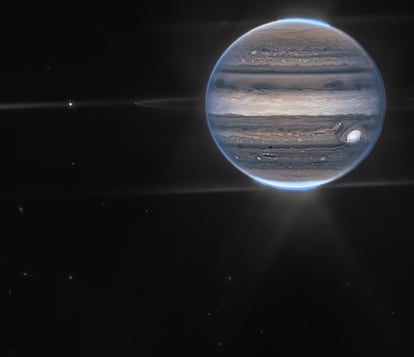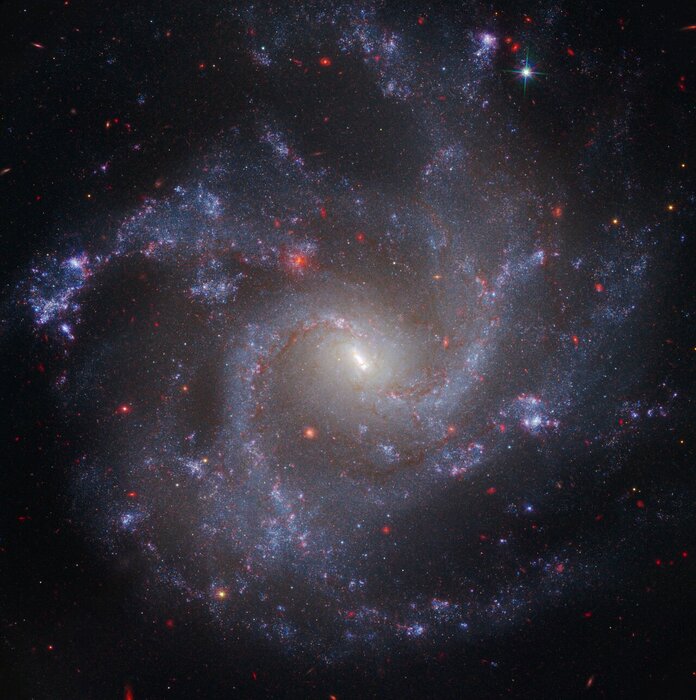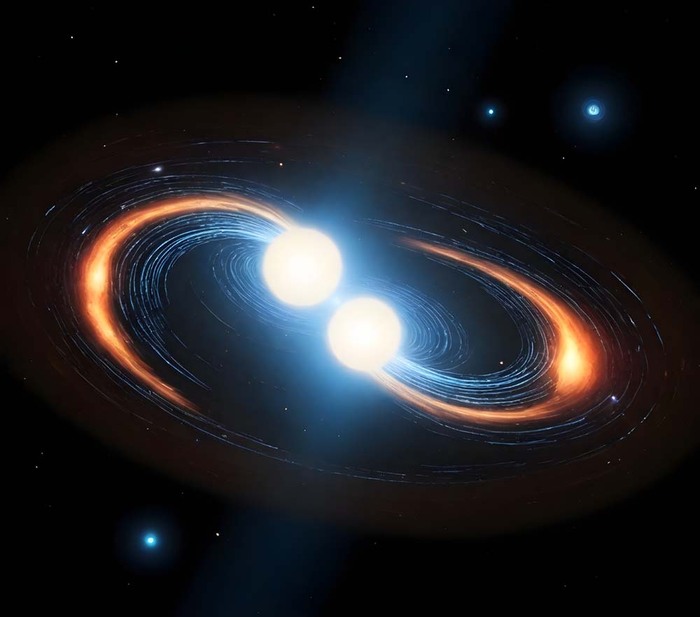Composite image of Jupiter, showing the planet's Great Red Spot. NASA, ESA, CSA, Jupiter ERS Team (EFE)
The James Webb space telescope, a joint mission of NASA, the European Space Agency (ESA) and the Canadian Space Agency (CSA), has released new images of Jupiter, which is the largest planet in the Solar System.
The photos taken by the James Webb, the largest space observatory ever launched into space, have revealed details of Jupiter's auroras, rings and satellites.
The two images released by NASA were taken with a Near-Infrared Camera (NIRCam), which has three specialized filters to capture infrared radiation, which is invisible to the human eye.
In the standalone view of Jupiter, created from a composite of several images from the James Webb, auroras extend to high altitudes above both the northern and southern poles of Jupiter, NASA explained.
The images also highlight light reflected from lower clouds and upper haze.
The photos also feature the Great Red Spot, a famous storm so big it could swallow Earth.
“The numerous bright white 'spots' and 'streaks' are likely very high-altitude cloud tops of condensed convective storms,” said Heidi Hammel, an interdisciplinary scientist on the space telescope mission, in a NASA statement.
By contrast, dark ribbons north of the equatorial region have little cloud cover, the statement explained.
Image of Jupiter with the moons Amalthea and Adrasthea to the left.
The wide-field view of Jupiter shows its rings and two moons called Amalthea and Adrasthea.
The fuzzy spots in the lower background are likely galaxies.
Researchers have already begun analyzing Webb's data on the largest planet in the Solar System and the fifth furthest from the Sun.













